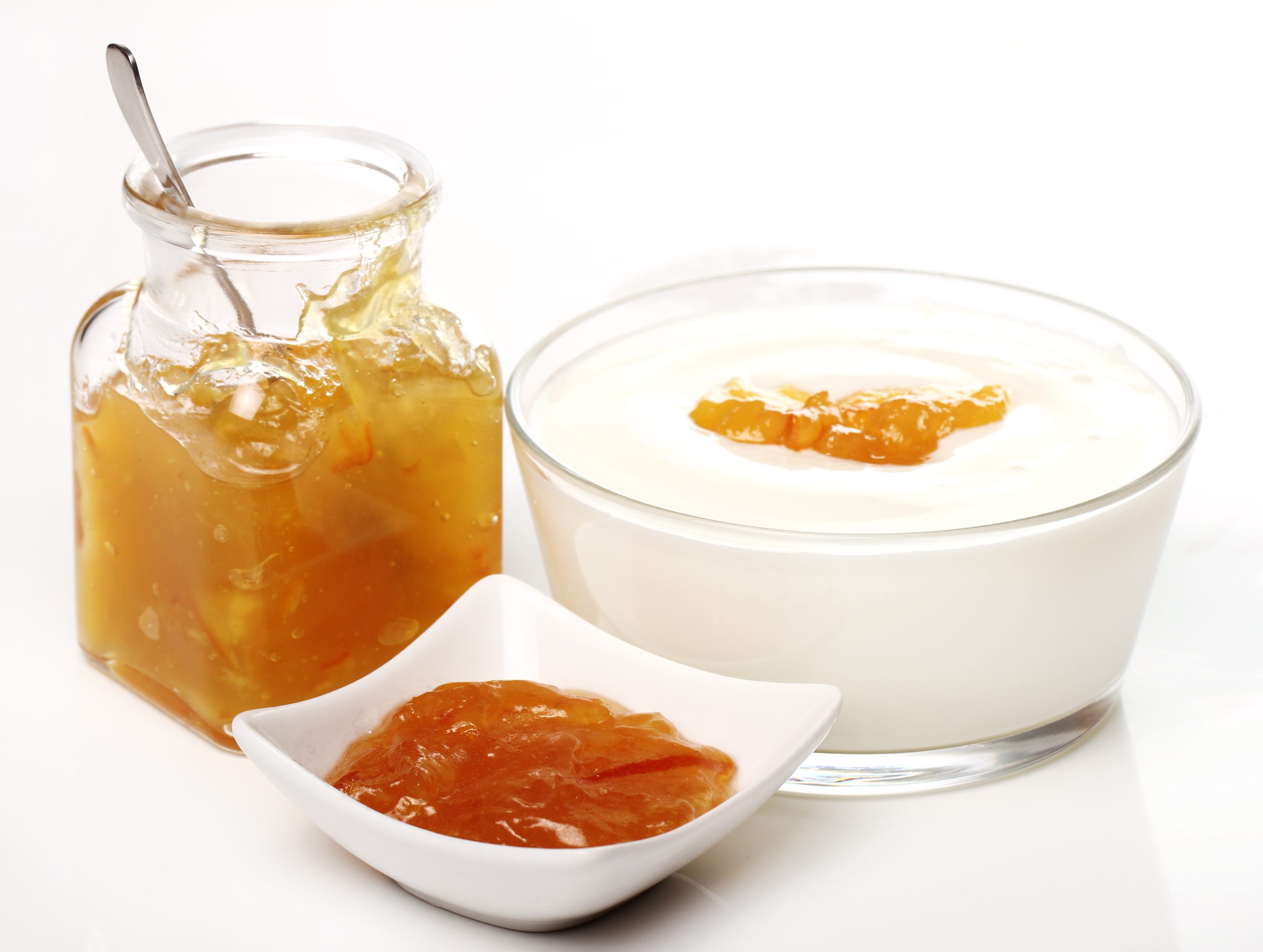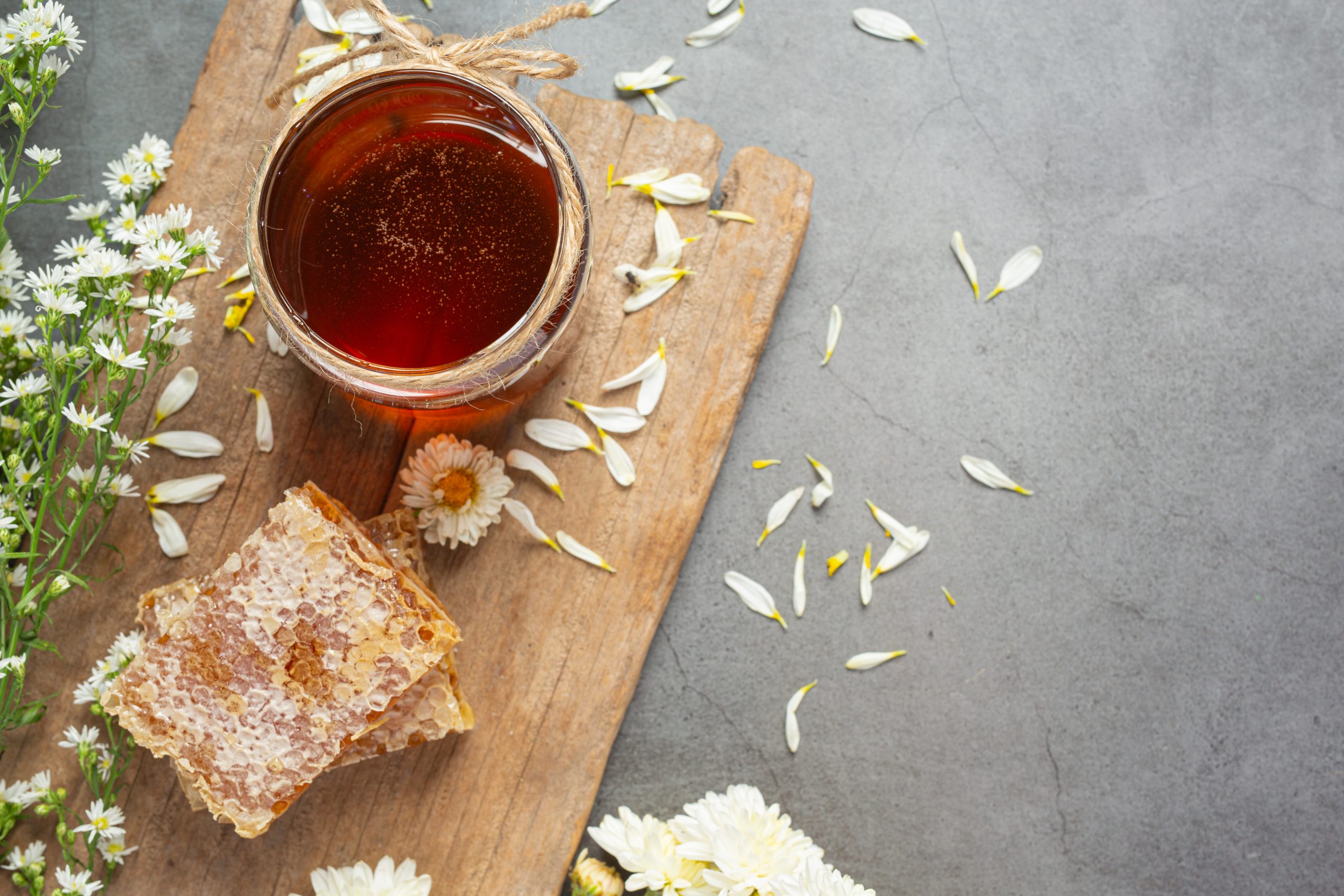Elderflower jelly is a type of jelly made from the flowers of the elderberry tree (Sambucus nigra). Elderflowers have a delicate and fragrant flavor that is reminiscent of honey and floral notes, and they are commonly used in culinary applications, including desserts and beverages.
Elderflower jelly is particularly popular in European cuisines, especially in countries like the United Kingdom, where elderflower cordial and other elderflower-based products are commonly used. It offers a refreshing and floral taste that is perfect for summertime treats.
How to Make Elderflower Jelly?
To make it, the elderflowers are typically steeped in water to extract their flavors. The resulting liquid is then combined with sugar, pectin (a natural thickening agent), and sometimes lemon juice for acidity. The mixture is brought to a boil and simmered until it thickens and reaches the desired consistency.
Ingredients:
- 30 to 40 elderflower heads
- 1.5 liters (6 1/3 cups) of water
- 1 lemon (juice and zest)
- 1.5 kilograms (6 1/2 cups) granulated sugar
- 1 package (85 grams) of powdered pectin
Here’s a Step-by-Step Guide to Making Elderflower Jelly:
- Begin by gently shaking the elderflower heads to remove any insects or debris. Avoid rinsing them with water as this can dilute their flavor.
- In a large saucepan, bring the water to a boil. Once boiling, remove the pan from heat and add the elderflower heads, lemon juice, and lemon zest. Stir gently to combine.
- Cover the saucepan and let the elderflower mixture steep for about 24 hours. This allows the flavors to infuse into the water.
- After 24 hours, strain the liquid through a fine-mesh sieve or a cheesecloth to remove the elderflowers and any other solids. Discard the solids and measure the liquid. You should have approximately 1.2 liters (5 cups) of liquid.
- In a separate bowl, combine the sugar and powdered pectin. Mix well to ensure the pectin is evenly distributed.
- Pour the strained elderflower liquid back into the saucepan and place it over medium heat. Gradually add the sugar and pectin mixture while stirring continuously.
- Bring the mixture to a rolling boil and continue to cook, stirring frequently, for about 10-15 minutes. Skim off any foam that forms on the surface.
- To check if the jelly has reached the desired consistency, you can perform a “wrinkle test.” Place a small amount of the jelly on a chilled plate and let it cool for a few seconds. If the jelly wrinkles when you push it with your finger, it has reached the setting point. If not, continue boiling for a few more minutes and repeat the test.
- Once the jelly has reached the desired consistency, remove the saucepan from the heat and let it cool for a few minutes. Skim off any remaining foam if necessary.
- Carefully pour the hot jelly into sterilized jars, leaving a small headspace at the top. Seal the jars with lids while the jelly is still hot.
- Allow the jars to cool at room temperature. As they cool, you may hear a popping sound, indicating that a vacuum seal has formed.
- Once completely cooled, store the elderflower jelly in a cool, dark place. It will continue to set as it cools and can be stored for several months.
What Does Elderflower Jelly Taste Like?
Elderflower jelly has a unique and distinct taste. It has a delicate and floral flavor with subtle notes of honey and citrus. The elderflowers impart a fragrant and aromatic quality to the jelly, which is both refreshing and slightly sweet.
The addition of lemon juice and zest in some recipes adds a touch of acidity and brightness to balance the sweetness. Overall, it offers a pleasant and sophisticated taste. It is often described as light, summery, and reminiscent of the natural essence of elderflowers.
The floral notes give it a distinctive character that sets it apart from other fruit jellies or spreads. It is a delightful treat that captures the essence of the elderflower in a delicious and versatile form.
What Does Elderflower Jelly Smell Like?
Elderflower jelly has a delightful and aromatic scent. When you open a jar of it, you will be greeted by a sweet and floral aroma. The fragrance is reminiscent of fresh flowers with hints of honey and citrus.
The scent of it is often described as delicate, summery, and inviting. The aroma of elderflower is one of its most prized characteristics, and it is what makes elderflower-based products so popular in culinary applications.
The fragrance of elderflower jelly can transport you to a garden filled with blooming elderflowers, evoking a sense of nature and freshness. Overall, the smell of elderflower jelly is pleasant, and enticing, and adds to the overall sensory experience of enjoying this delicious treat.
How Can We Store Elderflower Jelly?
To properly store it and ensure its longevity, follow these guidelines:
- Sterilized Jars: Use clean, sterilized jars for storing elderflower jelly. You can sterilize the jars by washing them in hot, soapy water, rinsing them thoroughly, and then placing them in a preheated oven at 120°C (250°F) for about 10 minutes. Alternatively, you can run the jars through a dishwasher cycle.
- Hot Filling: Fill the sterilized jars with the hot elderflower jelly while it is still hot or warm. This helps create a seal and prevents the growth of bacteria.
- Airtight Sealing: Place lids on the filled jars and tighten them securely. As the jelly cools, a vacuum seal will form. You may hear a popping sound, indicating a successful seal. Ensure that the lids are tightly sealed to prevent air or moisture from entering the jars.
- Cool and Store: Allow the filled and sealed jars to cool at room temperature. Once cooled, check the seals to make sure they are firm and not bulging. Store the jars in a cool, dark place such as a pantry or cupboard. Avoid exposure to direct sunlight or excessive heat, as these can degrade the quality of the jelly.
- Refrigeration: Once opened, it is recommended to store it in the refrigerator. The cooler temperature will help maintain its freshness and extend its shelf life. Consume the jelly within a reasonable time frame, typically within a few weeks to a couple of months, depending on the recipe and storage conditions.
Can a Diabetic Person Consume Elderflower Jelly?
Elderflower jelly is typically made with sugar as a sweetener, and consuming jelly made with regular sugar may affect blood sugar levels in individuals with diabetes. However, there are alternative sweeteners available, such as sugar substitutes or sugar-free pectin, that can be used to make elderflower jelly suitable for individuals with diabetes.
Using sugar substitutes that are specifically formulated for cooking and baking can help reduce the carbohydrate and calorie content of the jelly. These substitutes are often low or zero-calorie options that do not significantly impact blood sugar levels.
However, it’s important to follow the instructions and guidelines provided by the specific sugar substitute manufacturer to ensure proper usage and measurements.
Does Elderflower Jelly Go Bad?
Yes, like any food product, elderflower jelly can go bad over time. However, if stored properly, it can have a relatively long shelf life.
The exact shelf life of elderflower jelly depends on various factors such as the ingredients used, the storage conditions, and whether the jar has been opened or not. Generally, unopened jars of properly sealed elderflower jelly can last for several months to a year when stored in a cool, dark place.
Once opened, elderflower jelly should be refrigerated to maintain its freshness. In the refrigerator, it can typically be stored for a few weeks to a couple of months, depending on the recipe and storage conditions.
However, it’s important to check the product periodically for signs of spoilage such as mold growth, off odors, or changes in texture. If you notice any of these signs, it’s best to discard the jelly to avoid the risk of foodborne illness.
To maximize the shelf life of elderflower jelly, it’s important to follow proper storage practices, including using sterilized jars, sealing them tightly, and storing them in a cool, dark place. Refrigeration after opening is crucial to maintain its quality and prevent spoilage.
How can we Use Elderflower Jelly?
Elderflower jelly is a versatile ingredient that can be used in various ways to add a floral and sweet touch to your culinary creations. Here are some ideas on how to use elderflower jelly:
- Spread: Use elderflower jelly as a delicious spread on bread, toast, muffins, or scones. Its unique flavor adds a delightful twist to your morning breakfast or afternoon tea.
- Dessert Topping: Drizzle elderflower jelly over desserts such as cakes, cupcakes, panna cotta, or ice cream for an extra burst of flavor. It pairs well with creamy desserts and adds a touch of elegance.
- Yogurt Parfait: Layer elderflower jelly with yogurt and granola to create a refreshing and flavorful yogurt parfait. It adds a floral and fruity element to the mix.
- Cheese Pairing: Serve elderflower jelly alongside a cheese platter as a sweet and tangy complement to various cheeses. It pairs particularly well with soft and creamy cheeses like brie or goat cheese.
- Filling for Pastries: Use elderflower jelly as a filling for pastries such as turnovers, tarts, or Danish pastries. Its sweet and floral flavor will infuse the pastry with a unique taste.
Conclusion
In conclusion, elderflower jelly is a delightful and flavorful treat made from the flowers of the elderberry tree. It has a unique and delicate taste, with floral notes, hints of honey, and sometimes a touch of citrus from lemon juice and zest.
As with any food product, it’s important to check for signs of spoilage, such as mold growth or off odors, and use your judgment to determine if the jelly is still safe to consume. Overall, elderflower jelly offers a unique and delightful taste and can be enjoyed as a versatile and flavorful addition to various culinary creations.


